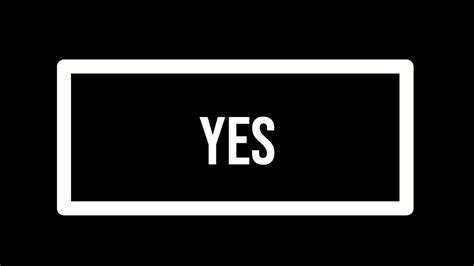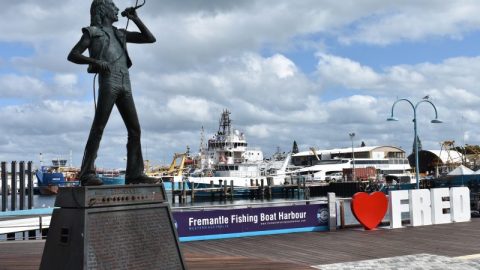Social media users promoting the No campaign are circulating a bogus list of proposals by Indigenous Australians, claiming it reveals the “real agenda” behind the Voice to Parliament.
The list contains 31 purported proposals, including that the Voice office will be the same size and budget as the Department of Prime Minister and Cabinet; that Indigenous people will “pay only 50% the rate of income tax”; that they will have “first claim on all public housing”; and that 10 per cent of all judges, magistrates, police officers, military officers, vice-chancellors and ambassadors must be Aboriginal.

The list is titled “From NIAA documents obtained under FOI – April 2023” and includes other so-called proposals such as changing the Australian flag, establishing a “black parliament” and fixing a percentage of GDP to be paid in reparations to First Nations people.
Social media posts claim this so-called secret list reveals the real agenda behind the Voice referendum because the proposals are drawn from “Secret government documents the National Indigenous Australians Agency was forced to release under freedom of information laws.”
A Facebook account that shared the list says, “This is more of what the racist activists want”. Another says, “Read this before you vote. The abos [sic] will destroy your life here as you know it.”
But the widely shared list does not contain proposals that will be acted on if the Voice is established following the referendum later this year.
It is in fact a hodge-podge of details taken from the minutes of regional meetings held up to seven years ago and recently released under FOI. Information from those meetings has also been available on the Referendum Council website since 2016.
WHAT DO WE KNOW ABOUT THE FOI DOCUMENTS?
The FOI document in question was released by the National Indigenous Australians Agency (NIAA) in March 2023, and contains records from First Nations Regional Dialogues held across the country in 2016 and 2017.
The 13 regional meetings were held by the bipartisan Referendum Council, and were attended by around 1,200 Indigenous Australians to discuss how best to recognise Indigenous Australians in the constitution.
A summary of minutes from those meetings was compiled to contribute to discussions at the 2017 Uluru national convention, where delegates produced the Uluru Statement from the Heart.
The items on the list shared on Facebook do not accurately reflect the records contained in the FOI document for a number of reasons.
First, more than one third of them are not in the FOI document at all.
For instance, there is no evidence of the statement for “Aboriginals to pay only 50% the rate of income tax”, or for “10 percent of all Judges, Magistrates, Police Officers, ADF Officers, Vice Chancellors and Ambassadors to be Aboriginal”. Nor is there evidence that “the Voice office will be the same size, and will have the same budget as the Department of Prime Minister and Cabinet.”
Second, many items on the list contain information that has been taken out of context. For example, the documents show that while the concept of a “black parliament” was raised by a speaker in Dubbo, it was as a pathway to achieve political representation “other than through the proposed constitutional Voice”.
Finally, many of the items on the list are a conflation of the official records of the meetings and selective quotes from attendees.
For example, one of the listed proposals suggests “changing the Australian flag because it ‘symbolises the injustices of colonisation’”. The first part of this sentence is taken from the official record: “The meeting spoke about the important symbolism of the flag, and how the Australian flag symbolised the injustices of colonisation”. The second part of the sentence is taken from an attendee’s quote: “Remember the day when Cathy Freeman ran with the flag. That flag was not recognised. It’s time to change the flag too.”
Despite the list containing items that have either been fabricated or provided without context, supporters of the No vote have shared the list widely on Facebook to make a number of baseless claims about the Indigenous Voice to Parliament.
Some users falsely claim that list is a set of “demands” to be realised through an Indigenous Voice to Parliament. “This is the list of demands the voice has written and expects if the Voice gets in,” one Facebook user wrote, while others similarly used the list to promote the No vote: “This is what voting Yes to the “voice to parliament” will mean. Vote NO”.
The NIAA has refuted these claims. In an email to FactLab, an NIAA spokesperson said the FOI documents contain the records of the regional dialogues and the National Constitutional Convention.
The FOI documents “simply reflect the broad range of comments of participants involved in the process” [of the regional dialogues ahead of the National Constitutional Convention], the spokesperson said.
“Information, communiques and videos from the Regional Dialogues and the Uluru National Convention have been readily available on the Referendum Council website since 2016-17,” the spokesperson said. “The documents do not represent the policy of either the government at the time they were created or the current government.”
HOW DID THE LIST COME ABOUT?
The so-called list shared on Facebook is the latest iteration of online claims that the NIAA has secret policy agendas in relation to the Voice referendum. The list’s 31 items originate from two claims, which have now been debunked, that have been circulating online since March.
The first 11 items on the list appear to be based on a letter sent to One Nation senator Pauline Hanson by an anonymous member of the public. Senator Hanson read out the alleged “11-point plan” in the Senate on March 22 and it has since been widely shared on social media.
A spokesperson for the NIAA told FactLab that the NIAA had nothing to do with the alleged “11 point-plan” and had no idea where it came from.
The remaining items on the list shared on Facebook first appeared in a second parliament speech made by Senator Hanson, on March 29, when she read out 20 purported “demands” from the NIAA FOI document relating to the First Nations Regional Dialogues.
In an earlier investigation FactLab found that the so-called “demands” listed by Senator Hanson did not accurately reflect the FOI document’s contents.
The FOI document has also been referenced by Country Liberal Party senator Jacinta Nampijinpa Price in an email she sent on behalf of anti-Voice campaign group Fair Australia.
Senator Price claimed the document showed the “real agenda” behind the referendum, including forcing Australians to agree to a “treaty” with Indigenous Australians and pay “rates/land tax/royalties” to the Voice. Her email has been widely shared online by social media users.
Senator Price’s email and claims were also fact checked by the Australian Associated Press and found to be misleading.
More recently, the claim has been referenced by former Sky News commentator Alan Jones in a video shared on Facebook on May 18. Mr Jones repeats Senator Price’s claims, without providing context on the FOI document. The video has had more than 14,000 views.
WHY DO PEOPLE SPREAD DISINFORMATION?
The list on Facebook is an example of disinformation which describes content that is intentionally false and deliberately shared by people to make money, influence politics or cause harm.
According to the Australian Electoral Commission, a common tactic used by agents of disinformation to create misleading content is “cherry picking”, which is when information is provided without context – as seen in the list shared on Facebook – often to persuade the reader that the information “indicates something nefarious”.
The list on Facebook does not contain a link to the original FOI document, nor an authorisation message from the NIAA – two tell-tale signs of disinformation.
According to Professor Claire Wardle, the co-founder and co-director of the Information Futures Lab at Brown University School of Public Health, the “weaponisation of context”, in which genuine content is warped and reframed, is an increasingly prevalent technique used by agents of disinformation, as “anything with a kernel of truth is far more successful in terms of persuading and engaging people”.
Building on this point, a 2019 report published by the European Parliament, found that “disinformation can confuse and manipulate citizens; create distrust in international norms, institutions or democratically agreed strategies; disrupt elections; or feed disbelief in key challenges such as climate change”.
THE VERDICT
False. The claim that a secret list reveals the “real agenda” behind the Indigenous Voice to Parliament is baseless. The list is drawn from FOI documents that contain records of talking points from the First Nations Regional Dialogues held in 2016 and 2017. More than one third of the items on the list do not appear in the FOI document. The list is merely a hodge-podge of topics raised at the dialogues.
~~~~~~~~~~~~~~~~~~~~~~~~~~~~~~~~~~~~~~~~
* You’ll find more Getting The Voice features right here
**Fremantle Shipping News supports the YES campaign
*** Editorial comment in introductory paragraphs by Michael Barker, Editor, Fremantle Shipping News

WHILE YOU’RE HERE –
PLEASE HELP US TO GROW FREMANTLE SHIPPING NEWS
FSN is a reader-supported, volunteer-assisted online magazine all about Fremantle. Thanks for helping to keep FSN keeping on!
** Don’t forget to SUBSCRIBE to receive your free copy of The Weekly Edition of the Shipping News each Friday!








